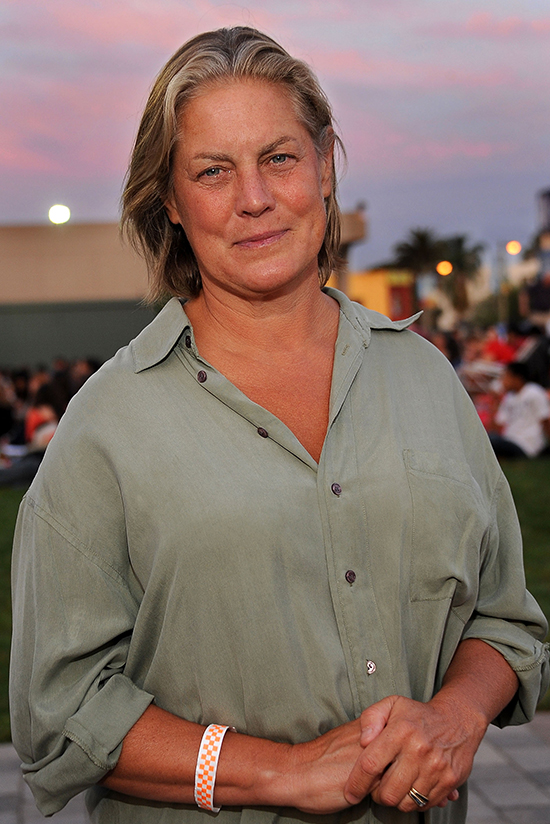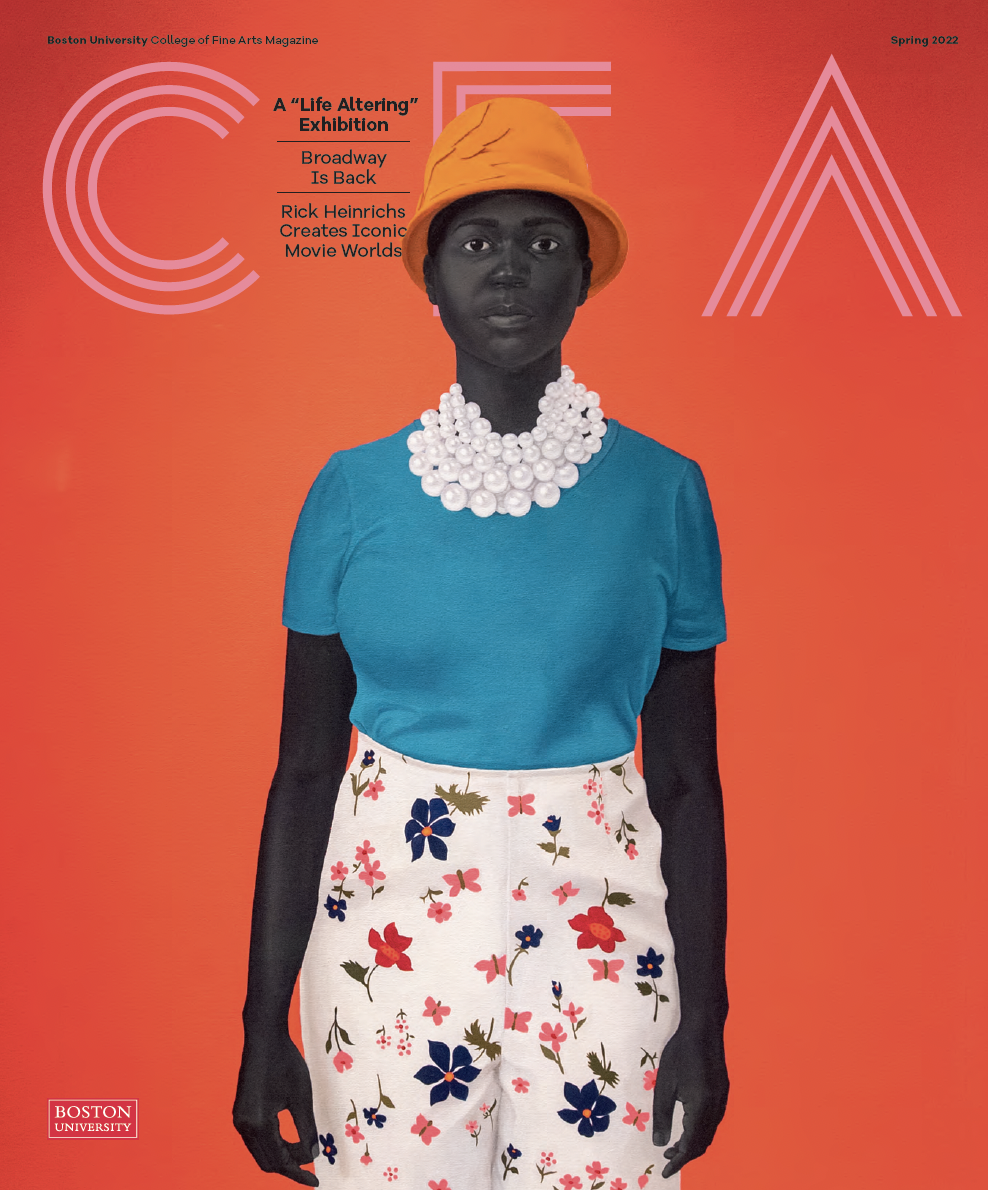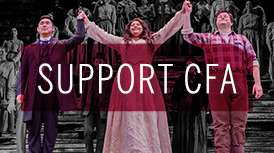From Sketch to Soundstage
As the production designer for films including Ghost, When Harry Met Sally, Patty Hearst, and Hitch, Jane Musky brings directors’ visions to life
By Julie Rattey | Photo courtesy of Paramount Pictures
Jane Musky’s heart sank as she stared into the closet. She’d thought the bedroom’s shag carpeting was bad, but this was far worse. The closet was maybe five feet long and three feet wide—and it would be the setting for half of her new movie. What the hell am I going to do? she thought.

The first few weeks Jane Musky (’76) spends brainstorming with a director is “the most exciting time” of her job. Photo by Getty Images
It was the late ’80s, and Musky (’76) was researching in San Francisco for Patty Hearst, a film about the abduction of the newspaper heiress and her two-month captivity in the closet of a Golden Gate Avenue apartment. The closet’s limitations were a cinematic problem. Production designer Musky and director Paul Schrader hashed out their options. Hearst had said she’d been blindfolded; how could they use that detail to their advantage? “We came up with this fantasy of what she thought the closet was,” Musky says. “The whole premise of the design, especially for the first half of the picture, was built around these wild fantasies of what she thought she was living in—what she thought she saw and what she thought she heard.”
Musky’s creativity and can-do attitude have served her well in her nearly 40-year career creating the defining look for stage, television, and film productions. Versatility has come in handy, too, as Musky’s résumé shows. She’s designed everything from the New York apartments in When Harry Met Sally and Hitch to the gritty frontier towns of Young Guns, and taken up eclectic projects ranging from the TV musical drama Smash to a biopic on rapper The Notorious B.I.G. (Notorious) to commercials for Garnier. Her theater background—including her teenage years painting high school musical sets and her studies at CFA—gave her a solid foundation from which to tackle any obstacle.
“I always tell young people who want to become designers, ‘Train in the theater first.’”—Jane Musky
“I always tell young people who want to become designers, ‘Train in the theater first,’” she says. A stage designer’s experience can be a valuable asset in other fields, as Musky discovered when she and a friend ventured into television to design an after-school special in the ’80s. “We could make props, we could do whatever, so all of these producers thought we were the best thing that had happened to them in years.”
The experience was a turning point for Musky. Through her television contacts, she met future Oscar-winning directors Joel and Ethan Coen and designed their first feature (and her film debut), Blood Simple. She has since collaborated with other prominent directors including Mike Newell (Mona Lisa Smile) and Alan Pakula (The Devil’s Own).
Musky’s latest project—Squirrels to the Nuts, a comedy about a prostitute-turned-actress—reunited her with director Peter Bogdanovich, with whom she had collaborated on the 1988 comedy Illegally Yours. “I think the greatest challenge is trying to keep up with his sense of humor,” Musky says. In one instance, they worked to find a design element that would provide a backstory for an unlikely, volatile couple played by Cybill Shepherd and Richard Lewis. “Peter kept trying to think of something funny to show how much they really were in love with each other, so we invented this wedding portrait. We photoshopped them into this ‘60s, out-in-the-fields kind of thing. It became a centerpiece over their heads in one of the big scenes.”
“Everyone feels that with the electronic age, things have gotten so efficient and tailored that you don’t need a lot of the things that you used to need. That’s not true at all.”—Jane Musky
The first few weeks Musky spends brainstorming with a director is “the most exciting time” in her job. “You spend some time together trying to understand where the script’s going to be heading, but on top of that, the director’s style and how far they want to pursue different journeys.” Then Musky evaluates “how far I take an idea, whether it’s through color, through comedy, through drama, through period feeling.” Finally, she strives to “make it accessible enough that the audience can jump in and not feel intimidated by the design.”
All this design work needs to be completed within budget and on schedule—an increasingly challenging demand. “Everyone feels that with the electronic age, things have gotten so efficient and tailored that you don’t need a lot of the things that you used to need. That’s not true at all. I think if anything, what’s happening is there are too many shortcuts that are actually detrimental to films.”
Inadequate preparation time, smaller crews, and less funding can decrease production quality—something Musky says producers new to the industry don’t always understand. “They look at you cross-eyed, like, ‘What do you mean you need this?’” Musky’s level-headed approach to her work and collaborative attitude have kept her in the game and expert at adapting to the challenges of her field.
“The more successful designers I know are very grounded and pragmatic,” not divas who insist on their own way, she says. Her experience has also confirmed how crucial it is to “always be good to your crew and try to really foster those relationships for the lifetime of your career.”
The longevity of Musky’s career gives credence to the advice she’d offer aspiring designers: “Really make sure your craft is honed before you get out of school, because it carries you very far in this business.”











November 11, 2014
Jane I remember you when you lived down at the end dorm room. Your roommate was never there because she stayed with her boyfriend at the dorm building next to us. My room mate was a wacko named Caroline. She was the reason I left BU after one semester. It is very pleasing to see that you have been successful. Congratulations on all your accomplishments.